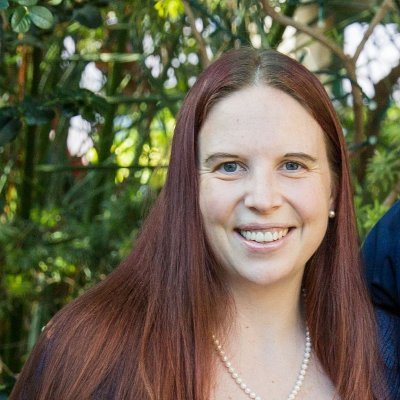New Mexico made national headlines in the spring of 2022 when Governor Michelle Lujan Grisham waived child care subsidy copays parents are expected to pay, and expanded eligibility to provide one year of free child care to most of the state’s residents. This was the first state to do so, and the Governor relied on the additional $10 million received in federal funding from the Covid-era American Rescue Plan. But making such sweeping changes permanent requires a dedicated funding stream. While there are notable public benefits to providing high quality, affordable child care to all residents, the political will has not yet shifted to create such systems here in the United States.
Tomorrow, New Mexico residents will vote on constitutional amendment 1, to allocate permanent funding toward early childhood education, which includes child care, pre-K and home visits. For a state that ranks last for “overall child well being,” the focus of child care is one way to improve outcomes and well-being for residents.
Please note that the ballot initiative was the culmination of a 10-year effort from advocacy groups to provide a dedicated funding stream for early childhood. This has the potential to change the future of work and child care: states are often the Petri dishes for making sweeping policy changes, so New Mexico’s efforts and results will be closely watched by advocates.
One policy expert is already keeping a close eye on the move to near-universal care. Hailey Heinz, deputy director of the University of New Mexico Cradle to Career Policy Institute, will be one of the experts to measure the efficacy of the state’s child care program and how it affects outcomes.
In this Q and A with Early Learning Nation, Heinz explains how New Mexico’s child care landscape has changed and what policy advocates across the country should be watching for.
Rebecca Gale: Let’s start off with New Mexico’s existing progress on child care: the money set aside for child care and early education has done well during the oil boom. How has that set the landscape for what’s happening now?

Hailey Heinz: It’s important to understand that New Mexico did not become interested in early childhood this year, or during the pandemic or just a few years ago. The state has had a long interest in funding early childhood; It has spent decades at the bottom of national rankings about child well-being, so there’s political will and urgency around figuring out how to improve the lives of families and children.
In terms of setting the landscape, in 2019, New Mexico created a dedicated cabinet department for early childhood, and in 2020, the legislature created the Early Childhood Trust Fund. But I can point back further to other choices that set the stage: the 2018 legislature, under a Republican Governor, gave $25M in new state dollars to subsidize child care systems, rather than just relying on federal block grants, which is how most state child care is funded. In 2013, New Mexico passed the Home Visiting Accountability Act, and since 2005, New Mexico has had high-quality, state-funded pre-K. New Mexico has been punching above its weight on early childhood for 20 years, with a really dedicated group of advocates, and it’s often been bipartisan in nature.
RG: There’s a lot of research about the positive effects of universal pre-K programs, but less about the positive effects of child care, specifically. Without having to wait 20 years to look at graduation rates, are there ways that New Mexico can know if their programs are working?
HH: I think we’ll see a mix of things we can measure right away and other things that take a long time. And, it will be up to people with jobs like mine to measure it correctly.
The funding will support different types of programs, including New Mexico’s pre-K. We have studied pre-K and we know it has strong outcomes, including improved 3rd grade reading and better rates of high school graduation.
For a program like the home visiting, we are looking at building strong relationships between babies and caregivers. This work is important to do but has a later payoff. The big bet we are making with home visiting is that it will build the capacity of families to be more patient, resilient and supported. It’s going to take years to see the results of that. Knowing that families become more supportive caregivers is good, but that’s a long way out for us to really know it’s successful.
One of the things that really appeals to me as a child-care scholar is that high quality care has an impact on families right away. Women’s labor participation, within a year or two, will see a shift as women were able to return to the labor force if they wished to. It can be a subtle shift too with women working more, or being more willing to take a promotion or go full time without being worried about losing their child care assistance. In a state like New Mexico, with its huge rates of economic insecurity, reliable stable child care makes a difference.
On the child-level benefits for near-universal child care, it’s less clear in the research than it is for something like pre-K. But I think NM is well-positioned to work on that, too. We have a quality system. Based on pre-K standards, we know pre-K gets results. But it’s not the same with child care because access is different. With pre-K, the family signs up; they get a year of pre-K; they don’t have to prove eligibility; and they get free pre-K for the entire year.
Child care assistance has historically been more of a welfare model where parents need to show they are needy and deserving. Because circumstances and eligibility can change, kids cycle in and out of the program so they don’t get that consistent, extended access. As access to child care improves, the results may start to look more like pre-K and we’ll see more of the child-level outcomes, but that can take longer.
RG: New Mexico is not offering universal child care, but it’s pretty close. A family of four can access benefits with income up to about $110,000 per year (400 percent of the poverty line) in a state where the overall median household income is about $51,000 per year. For families above that eligibility line, will they see a benefit to the child care programs? Has that been a difficult political issue?
HH: Expanded investment in the child care sector and expanded subsidy eligibility benefits all families with children who use child care because it’s a way to infuse funding into a sector that is really cash-starved, especially during the pandemic. Families, including those who pay privately, benefit from stable quality care. Public investment helps build quality capacity for everybody.
In New Mexico, our subsidy policy changes meant that providers received more payment for a subsidy than from families who were private payers—which has been the reverse for most states. Interesting to see what happens with that—I am keeping my eye on that.
It hasn’t been a difficult political issue. People in households earning more than $100K are not accustomed to qualifying for direct public benefits. They don’t expect them and it’s not like something has been taken away. A lot of other parts of the early childhood system are universal. Our pre-K program does not have an income qualification. Most of our home visiting programs have universal eligibility. New Mexico has taken a universalistic approach; the eligibility ceiling is high enough that I haven’t heard blowback about it.
RG: The American Rescue Plan (ARPA) funds inspired many states to innovate with early child care, and New Mexico attempted to change the cost modeling for child care, meaning paying providers what child care costs, not the market rate of what they could sell it for. Do you see that aspect having national reverberations, particularly in light of providers losing staff to higher paying jobs?
HH: Yes. The most interesting thing going on with the cost modeling is the potential to improve wages and working conditions for the child care staff. Policymakers can use the cost modeling study as a basis to say, ‘We did a study and this is what we think child care costs per toddler if we pay everyone $12 an hour.’ What would it cost at $15? $18? We can set rates that way, but it’s capped at what parents can pay.
Part of the exciting potential is that it has better positioned New Mexico to address compensation through the subsidy system. If you can reach a point where many of your child care slots are paid for by subsidy, it is big enough in your system that you can use it to move the needle on something like compensation.
I think wages and working conditions are really the next big frontier in early childhood that must be solved to achieve anything else. You can’t expand access if you can’t hire enough people. And you won’t get to quality outcomes unless you have a stable workforce. Child care has a tragically underpaid workforce. This is where I have the most hope that the permanent fund initiative will be a game changer.
New Mexico has managed to do amazing things. But we have done it on the backs of the workers—mostly women and women of color—who have not earned enough to sustain the system.
RG: You mentioned you think the ballot initiative will pass, but that so much of the radical change on child care has happened already. How long do you think it will take for state residents to feel that this shift has made a difference?
HH: It’s not obvious to a family if the lead teacher in their child’s infant room gets a raise, but families complain when there is high turnover in their child care system. Better pay and working conditions promote stability, and families should see shortly thereafter, an enhanced stability because the workforce isn’t being tempted away to go work in retail or fast food.
The funding gives New Mexico a chance to keep doing what we are doing. States did a lot of interesting things. I predict there we’ll see a thousand dissertations on what states did with ARPA funding.
There is some hand-wringing about what happens when federal funds go away. But some of what we feel here is that it won’t go away. What I feel is that it won’t stop. It’s part of what makes New Mexico unique, to say, ‘Yeah this isn’t temporary. We don’t think it should stop.’ We are going to be the ones to keep this early childhood investment going.

Rebecca Gale
Rebecca Gale is a writer with the Better Life Lab at New America where she covers child care. Follow her on Instagram at @rebeccagalewriting, and subscribe to her Substack newsletter, "It Doesn't Have to Be This Hard."



